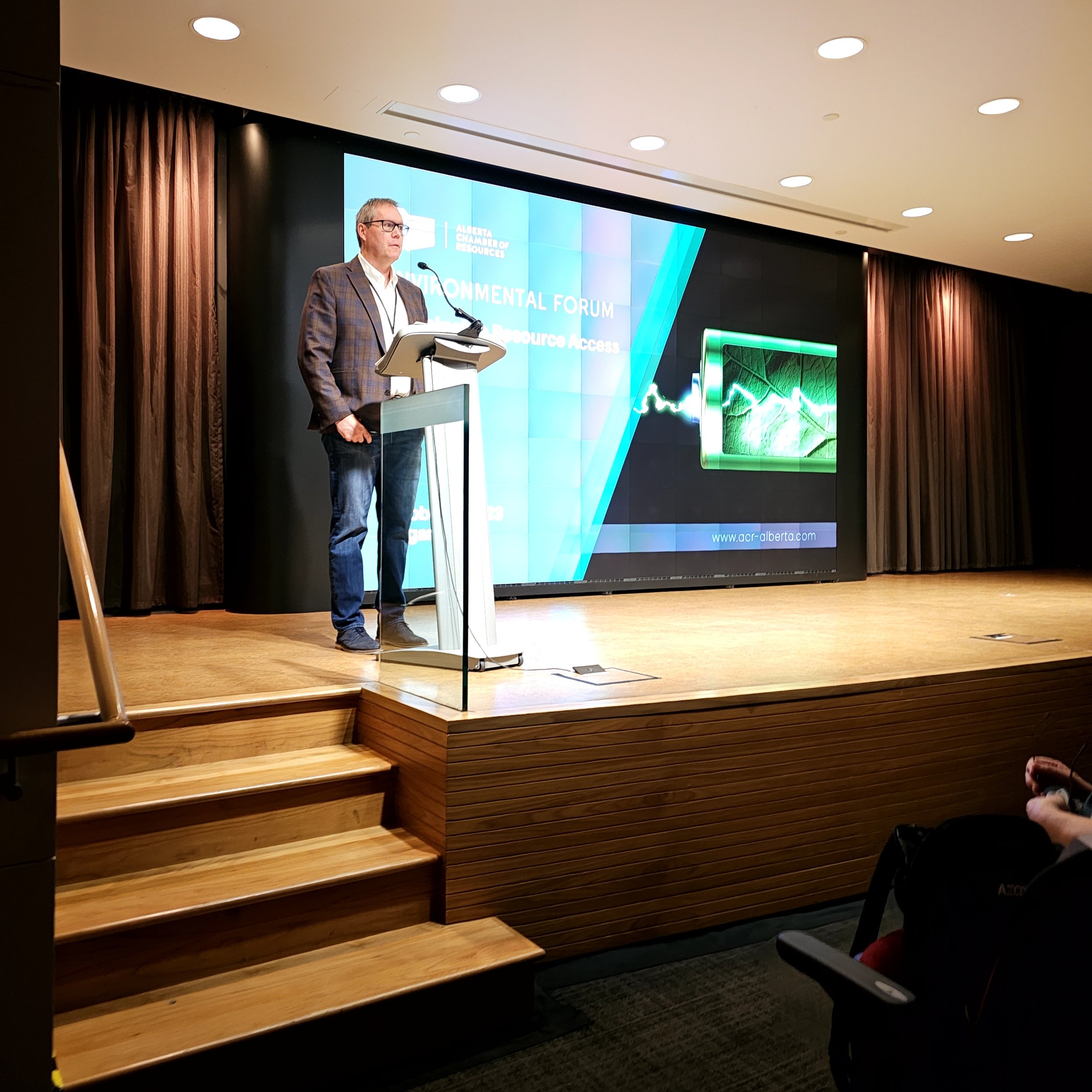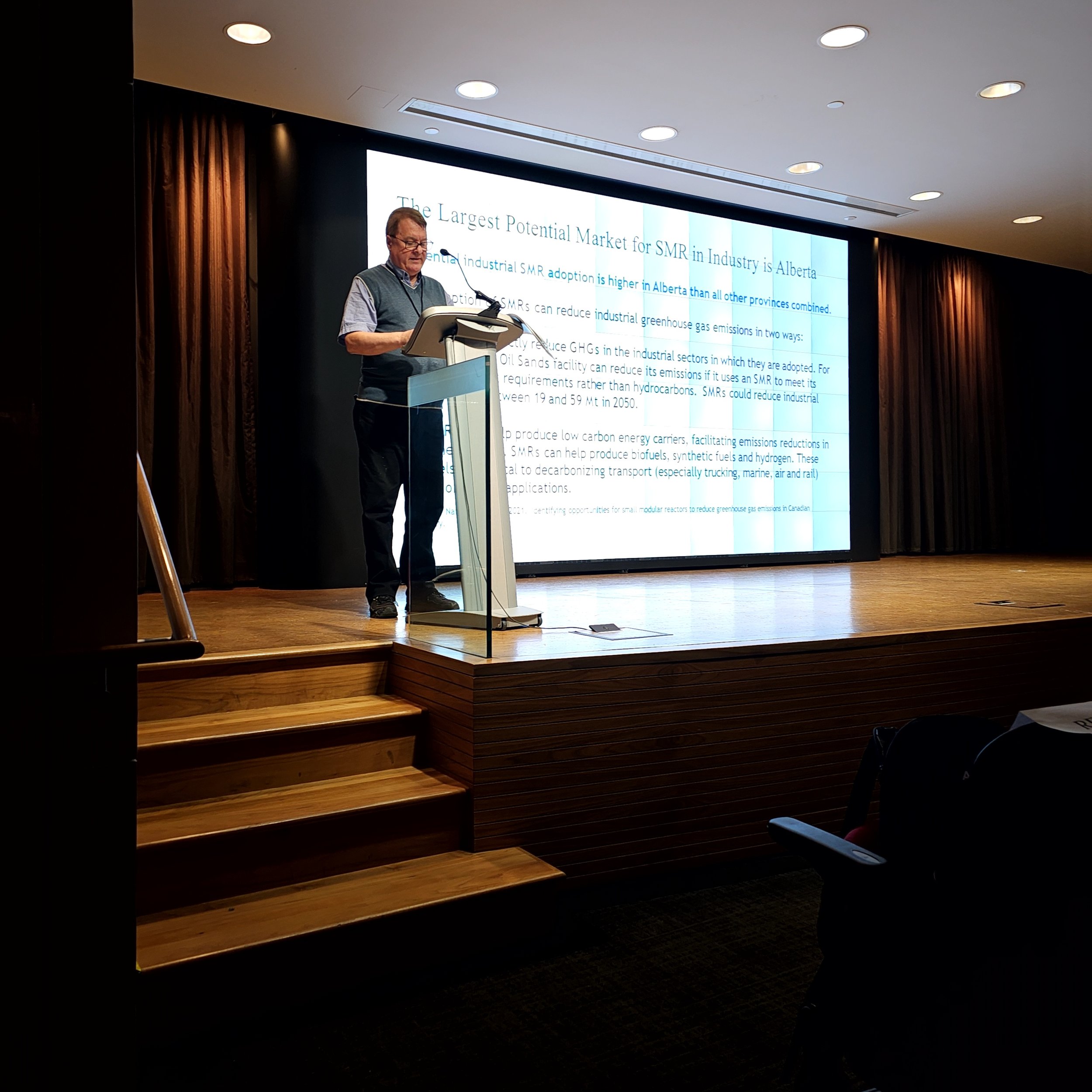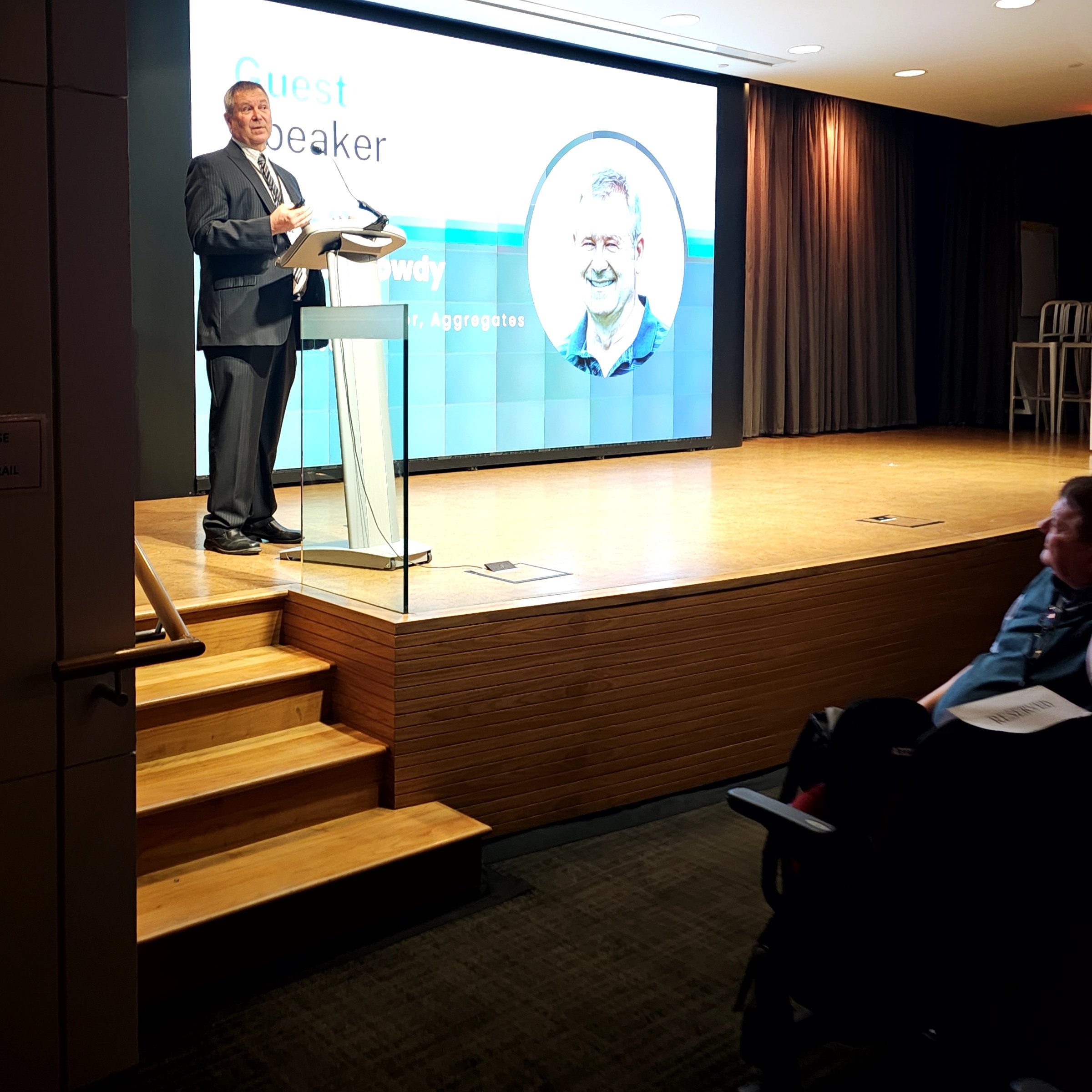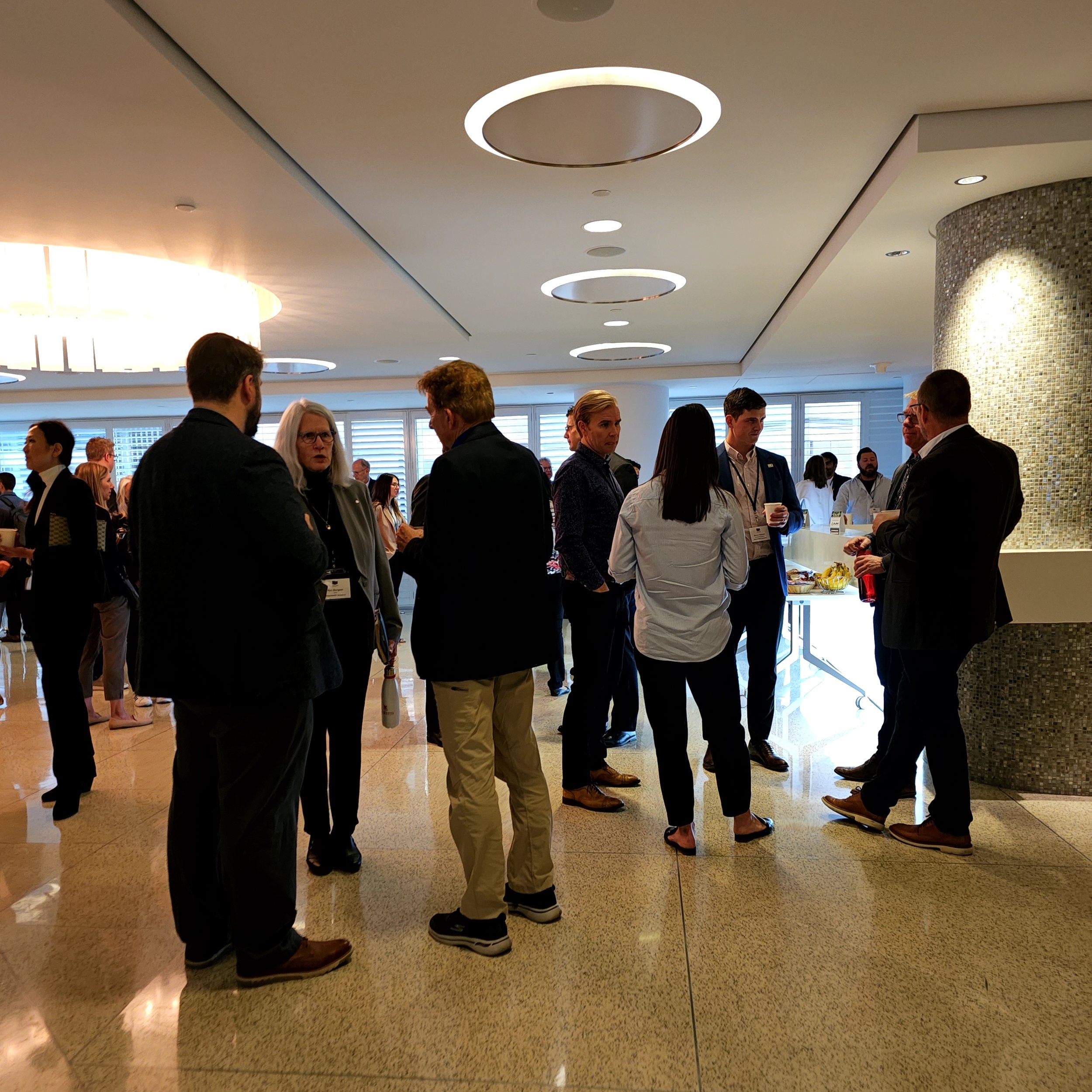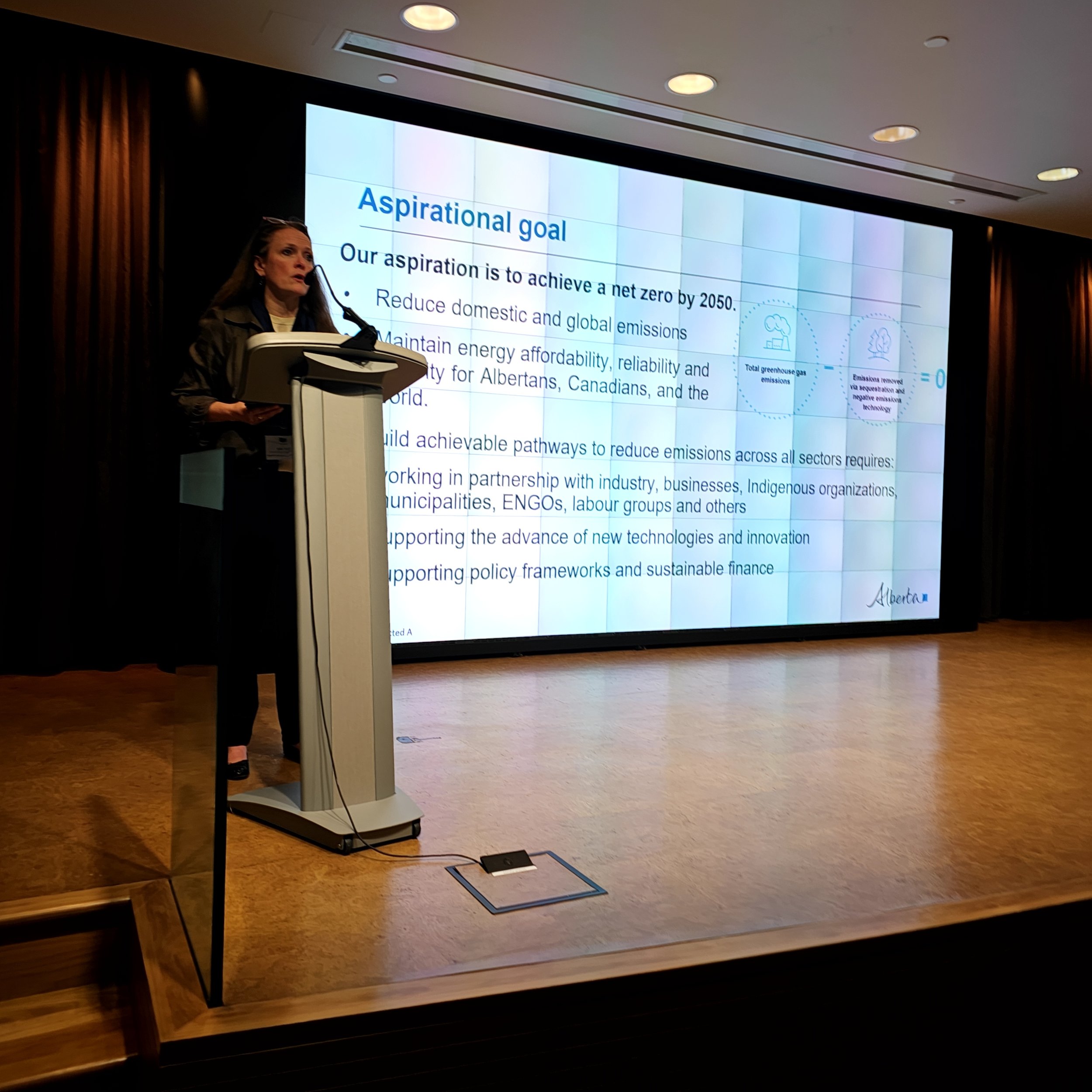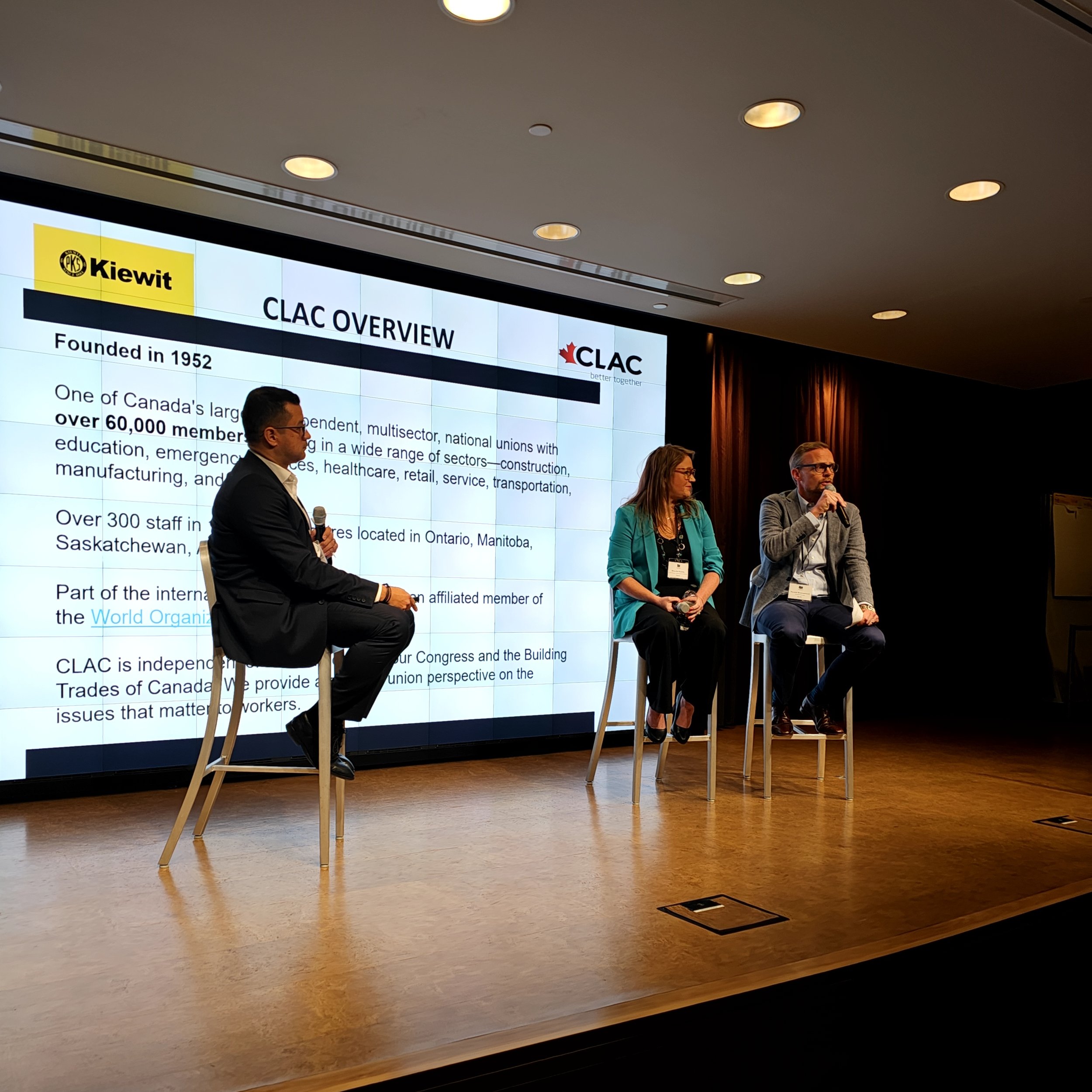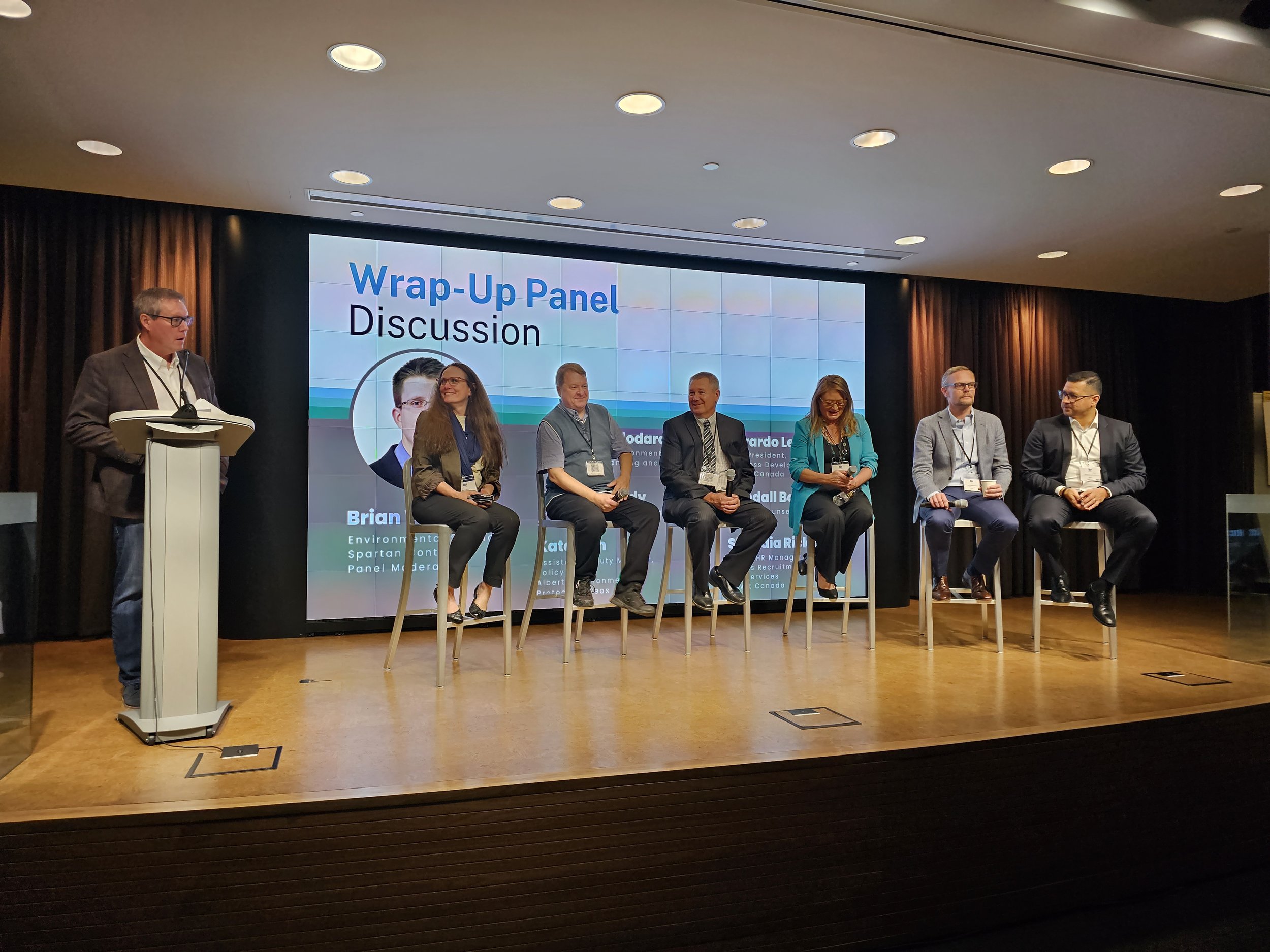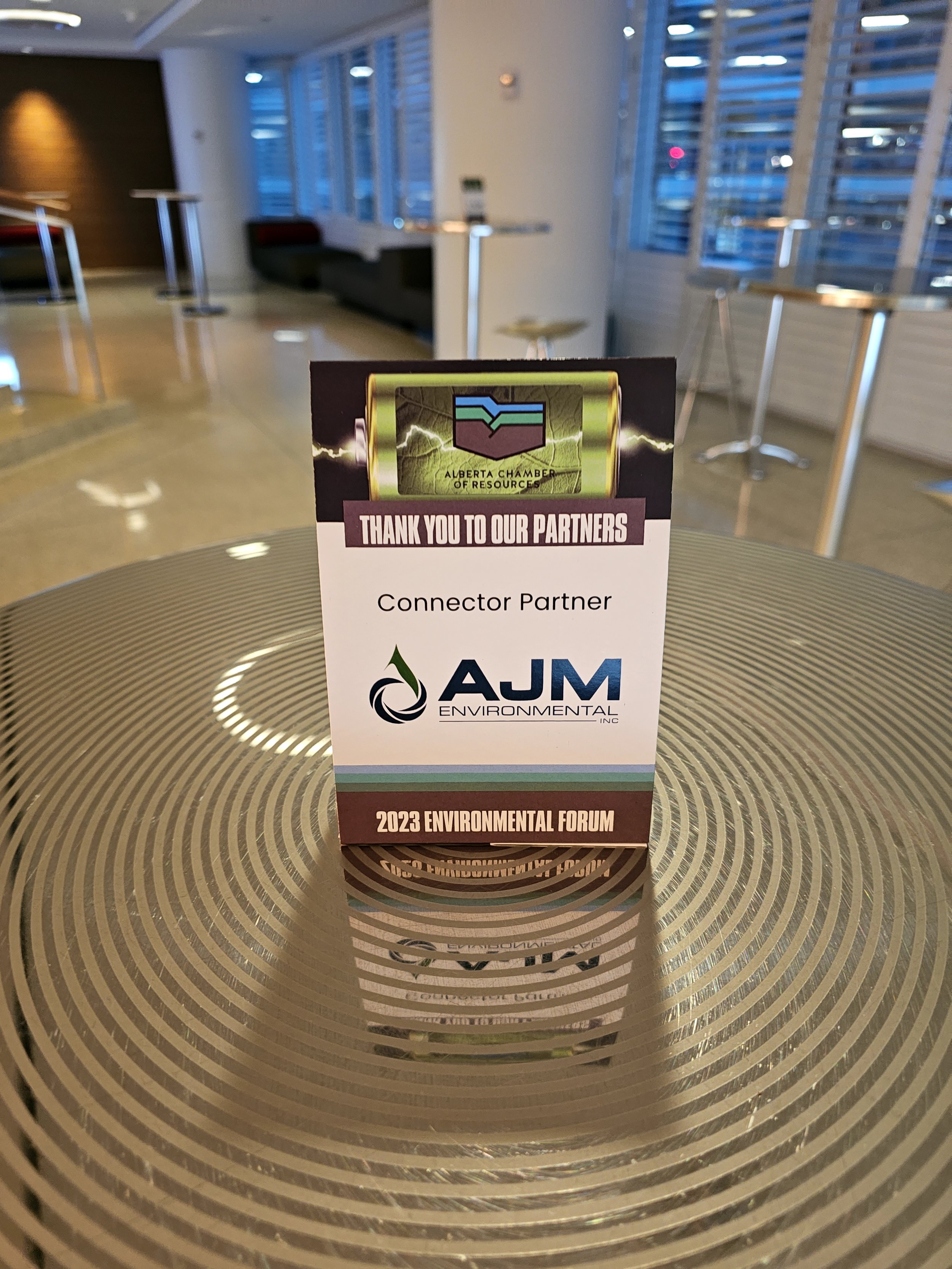Fall 2023 Environmental Forum Recap
ACR’s Environmental Forum was buzzing with ideas and discussions around sustainable resource access. Attendees and guest speakers were eager to talk about the topic and brought a variety of perspectives to the auditorium. The event was held in the ConocoPhillips auditorium in Calgary, AB on October 4, 2023. Amid the carbon emissions reduction concerns and efforts, the discussions were timely. Speakers came together to talk about the opportunities and challenges for Alberta’s resource sector. Guest speakers from businesses, unions, and government, untangled a web of possibilities and opportunities and left attendees with information and resources to help their organizations path forward toward net zero by 2050.
Small Modular Reactors
First to take the podium, and the emcee for the event, Scott Hierath, ACR’s Executive Director introduced the Environmental Committee members and the ACR Board members. He thanks the event Partner, AJM Environmental and introduced the first guest speaker, Tomasz Wlodarczyk, Senior Advisor, Environmental Management, Planning and Approvals, at SLR Consulting. Mr. Wlodarczyk knows Small Modular Reactors (SMR) and did a wonderful job explaining them.
Small Module Reactors are nuclear fission reactors and are smaller than conventional nuclear reactors. SMR’s have a typical electrical power output of less than 300 MW. They’re considered modular because they're designed to work either independently or as modules in a bigger complex. They’re intended to be built entirely in a factory and installed module by module, making construction quicker, more efficient and theoretically cheaper.
Since 2021, New Brunswick, Ontario, Saskatchewan and Alberta have been studying SMR’s through a joint memorandum of understanding (MOU). Findings from a feasibility study in August 2023 conclude that SMR’s are a viable option for the provision of electricity and steam in the Oil Sands to support net-zero energy production. Integration of an SMR with Oil Sands operation represents a novel application of nuclear technology.
But is Canada ready? Canada’s early adoption of SMRs would position the nation as a world-leader in new nuclear innovation and a global SMR technology hub. Alberta would be the largest potential market in Canada. Adoption of SMRs could reduce industrial GHGs by between 19 and 59 Mt by 2050. For example, an Oil Sands facility can reduce its emissions using an SMR, instead of hydrocarbons, to meet its process heat requirements. SMRs can also help produce low carbon energy carriers, facilitating emissions reductions in other sectors. They can help produce biofuels, synthetic fuels and hydrogen.
While Mr. Wlodarczyk was quick to point out SMR’s contributions to sustainability (longer lifespan compared to conventional reactors, their off-site testing and quick installation, inherent safety features, their ability to be deployed in tandem with renewable energy technologies, scalability, and modular designs reducing complexity and making transport easier), he didn’t shy away from noting the uncertainties and new challenges SMR’s would bring. These include waste, investment, jobs, regulations, competitiveness, and Indigenous involvement.
Aggregates
The next guest speaker to take the podium, introduced by Scott, was Bill Gowdy, Technical Director of Aggregates at SLR Consulting. Like many attendees, we came away from Bill’s presentation with a newfound interest in aggregates, how they’re formed, how they’re mined and how they’re used.
Aggregates are materials used in construction including sand, gravel, and crushed stone. As more infrastructure and industry projects are planned, more aggregate will need to be mined. To put into perspective the amount of aggregate used on projects, a two-lane highway requires approximately 100,000 tonnes of aggregate for every mile of road. However, aggregate pits are being depleted and there are barriers to mining the available resources close to market. Like other resource sectors, aggregate mining is also seeing increased regulations such as requirements for more environmental studies, increased monitoring and performance standards, and reclamation.
While aggregate mines are reclaimable, and there are many wonderful examples of aggregate mines that have been reclaimed, the problem arises when pits are depleted, and the mine sites continue to move farther from market. This increases greenhouse gas emissions as a large percentage of emissions from aggregate mining is caused by transporting the product from the mine site to its final destination. While there are aggregate deposits closer to market, these will likely never be extracted due to public opposition and land-use conflicts. So, as the available aggregate pits become farther from market, greenhouse gas emissions will rise along with the cost of the product.
Reclaimed aggregate mine sites to note:
Legends Golf Course (Strathcona County, AB)
Hawrelak Park (Edmonton, AB)
Greystone Burnswest (Cochrane, AB)
Villeneuve farmland
Government of Alberta Emission Reduction and Energy Development Plan
Once coffees had been refreshed and attendees had a chance to stretch their legs, the event resumed, and Scott introduced Kate Rich, Assistant Deputy Minister of Environment and Protected Areas with the Government of Alberta. Kate brought a different perspective to this forum offering insights into the plans put forward by the Government of Alberta to reach emission reduction goals. She made a point to note that the Government is not in business, but they are here to ensure that Alberta’s resources are competitive and that Alberta businesses are able to get their products to market.
Did you know Alberta was the first province to have an Environment department and a climate strategy? The updated Government of Alberta’s Emission Reduction and Energy Development Plan includes 70 new initiatives, aspirations to achieve net zero by 2050 and fundamental policy approaches.
The goal of net zero by 2050, as mentioned by Kate Rich, is transformational and takes into consideration the advancement of new technologies. Since we don’t know what technologies will be available in the future, the government’s approach to net zero by 2050 is malleable and continuously changing. However, the collaborative approach with industry and businesses is something that has remained in the updated version of the Emission Reduction and Energy Development Plan.
The aspirations for net zero by 2050 include reduced domestic and global emissions, and maintaining energy affordability, reliability and security for Albertans, Canadians, and the world. Building achievable pathways to reduce emissions across all sectors will require the Government of Alberta to:
work in partnership with industry, businesses, Indigenous organizations, municipalities, ENGOs, labour groups and others,
support the advancement of new technologies and innovation,
support policy frameworks and sustainable finance.
But, to fully understand this plan, you must also understand the holistic approach taken in developing it. Many aspects of the plan overlap and applied in all sectors such as Indigenous leadership, carbon pricing and emissions trading (TIER), emissions reduction, clean tech innovation, and carbon capture utilization and storage (CCUS).
The Government of Alberta’s Emission Reduction and Energy Development Plan includes incentives for emissions reductions across all sectors and opportunities for new technologies that will increase Alberta’s competitiveness and help businesses be more successful across all markets.
Labour Markets
Labour shortages are a looming concern for industry and many businesses across the country. This has become an interprovincial problem as a generation gets set to retire. A panel with speakers from Kiewit and CLAC provided a labour market overview before the final forum wrap-up discussion.
Gerardo Leclair, Vice President, Business Development at Kiewit, Shaudia Ricketts, Senior Human Resources Manager, Trades Recruitment and Services at Kiewit, and Randall Boessenkool, General Counsel at CLAC, talked about the varied labour markets over the last few years. It has been difficult for many businesses to find tradespeople and the labour shortage we are currently feeling is hitting harder than many had expected. As a large percentage of tradespeople get set to retire, the skill set of the younger generations has decreased. This is a problem as there are many projects already planned or starting in Canada that will require skilled trades. Tradespeople are severely needed in Alberta, Ontario and Atlantic Canada.
The panel suggested some ways to replenish the workforce. These included encouraging young people to pursue a career in the trades, creating employee loyalty within your organization, creating opportunities for learning and expanding employee skill sets, and partnering with trade schools.
Creating loyalty among your current workforce can be done by recruiting great people, ensuring they have the proper training to do their job, ensuring they have support and opportunities to learn on the job and by training them for other jobs so when those skill sets are needed, there are people to fill the gaps.
The labour shortage is a widely felt problem and organizations need to start encouraging and recruiting tradespeople now to ensure adequate labour is available to complete planned and upcoming projects. This issue will only be solved through industry working together to ensure an adequate labour supply for the future.
Wrap-up
As the forum came to an end, the final panel brought all the guest speakers back to the stage, and was moderated by Brian Van Vliet, Environmental Solutions at Spartan Controls. The key take-aways from the discussion included:
Small modular reactors are a path toward net zero by 2050. They could be a great opportunity for oil sands as they have a large sustainable potential and can help overcome many of the energy challenges.
Aggregates are critical to the economy and depleted deposits are reclaimed.
Realistic labour forecasts are required to meet labour supply challenges and Alberta has the resources to think outside the box to meet the required demand.
Students need to be encouraged to pursue and continue careers in the trades.
The labour issues need to be examined by industry as a whole and the problem will be best solved when industry works together to find a solution.
ACR’s membership represents the potential Alberta has and for this reason, ACR and industry need to be talking about the great work they are doing to path forward toward a net zero future.
This Environmental Forum offered a variety of perspectives on sustainability challenges and steps toward sustainable resource access. Thank you to everyone who participated, our guest speakers, the Environmental Forums Committee, our partner AJM Environmental, and all the attendees.
Let us know what your take-aways were from the Environmental Forum. What would you like to discuss at the next Environmental Forum?
Presentations
Small Modular Reactors in Canada: Promises, Opportunities and Challenges (Tomasz Wlodarczyk)
Sand and Gravel - You Can’t Operate Without It (Bill Gowdy)
Overview of Alberta’s Emissions Reduction and Energy Development Plan (Kate Rich)
Making It All Work: Alberta’s Sustainable Labour Future (Panel: Gerardo Leclair, Shaudia Ricketts, Randall Boessenkool)


